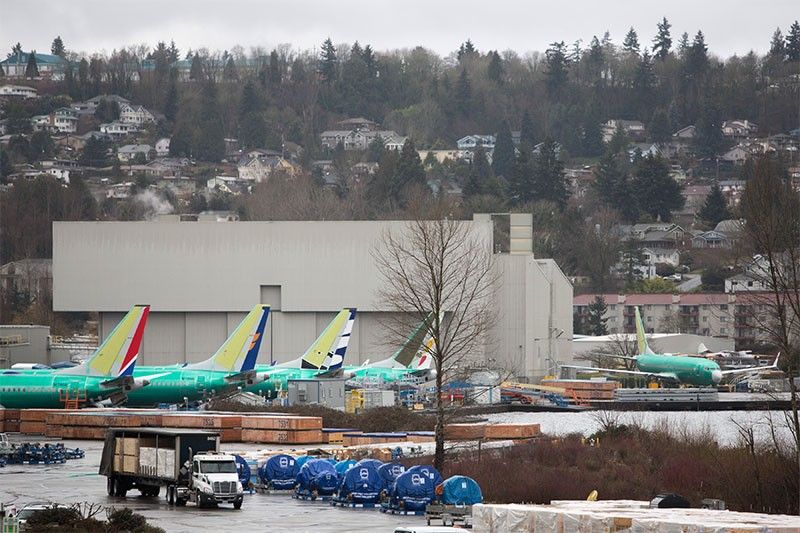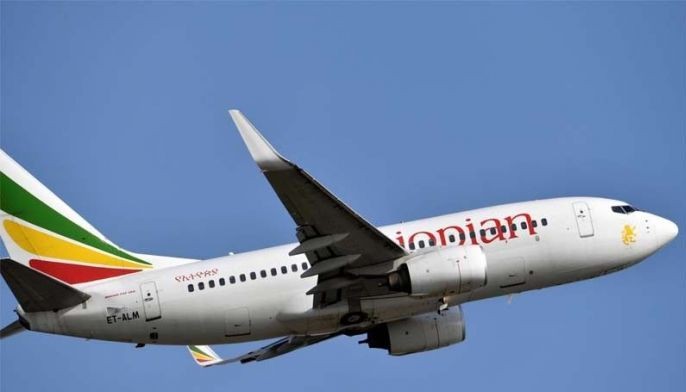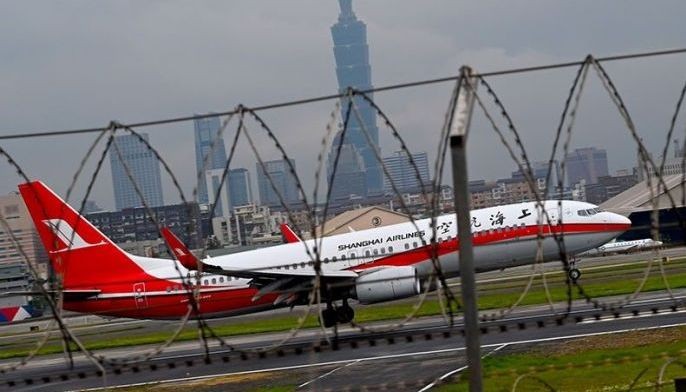Ethiopian Airlines crash: What is the MCAS system on the Boeing 737 Max 8?

WASHINGTON, United States — Similarities between the Lion Air and Ethiopian Airlines crashes have focused attention on an anti-stalling system used in the new Boeing 737 Max 8 aircraft.
The Maneuvering Characteristics Augmentation System (MCAS) is an automated safety feature on the 737 Max 8 designed to prevent the plane from entering into a stall, or losing lift.
Both the Lion Air jet, which crashed in October, killing 189 people, and the Ethiopian Airlines aircraft, which went down on Sunday, leaving 157 people dead, were fitted with the system.
Both planes experienced similarly erratic steep climbs and descents and fluctuating airspeeds before crashing shortly after takeoff.
The US Federal Aviation Administration (FAA), while noting the similarities between the Lion Air and Ethiopian Airlines accidents, stressed that it was too early to draw any conclusions.
MCAS was introduced by Boeing on the 737 Max 8 because its heavier, more fuel-efficient engines changed the aerodynamic qualities of the workhorse aircraft and can cause the plane's nose to pitch up in certain conditions during manual flight.
Angle of attack sensors on the aircraft tell the MCAS to automatically point the nose of the plane down if it is in danger of going into a stall.
This is done through horizontal stabilizers on the plane's tail which are activated by the aircraft's flight control computer.
According to Boeing, MCAS does not control the plane during normal flight but "improves the behavior of the airplane" during "non-normal" situations.
These could be steep turns or after takeoff when a plane is climbing with flaps up at speeds that are close to stall speed.
According to the flight data recorder, the pilots of Lion Air Flight 610 struggled to control the aircraft as the automated MCAS system repeatedly pushed the plane's nose down following takeoff.
The pilots of the Ethiopian Airlines plane reported similar difficulty before the aircraft plunged into the ground shortly after takeoff.
Software updates
A preliminary report on the Lion Air Flight 610 accident blamed it in part on a faulty angle of attack sensor that triggered the MCAS system and automatically forced the plane's nose down.
Pilots flying the same Lion Air plane the previous day had managed to override the automated flight control system.
Boeing came in for some criticism after the Lion Air crash for allegedly failing to adequately inform 737 pilots about the functioning of MCAS or provide training about the system.
Following the Lion Air crash, Boeing issued a bulletin to airlines operating the 737 Max 8 advising pilots how to override the MCAS system.
The US aircraft manufacturer issued a statement on Monday saying it was too early to understand the cause of the Ethiopian Airlines accident.
Boeing also said it was working on software updates to the MCAS system which would be deployed across the 737 Max fleet.
It said procedures already exist to "safely handle the unlikely event of erroneous data coming from an angle of attack (AOA) sensor," the suspected cause of the Lion Air crash.
"The pilot will always be able to override the flight control law (MCAS) using electric trim or manual trim," the aircraft manufacturer said.
A growing list of countries have grounded their 737 Max aircraft after the two deadly crashes in just five months.
Boeing has described the Max series as its fastest-selling family of planes, with more than 5,000 orders placed to date from about 100 customers.
But not since the 1970s -- when the McDonnell Douglas DC-10 suffered successive fatal incidents -- has a new model been involved in two deadly accidents in such a short period.
Ethiopia's parliament has declared Monday a day of national mourning after a Nairobi-bound Ethiopian Airlines plane crashed, killing all 157 people onboard.
"The House of People's Representatives have declared March 11, 2019, a national day of mourning for citizens of all countries that have passed in this tragic accident," the office of Ethiopia's Prime Minister Abiy Ahmed said on Twitter on Sunday. — AFP
The country's transport minister says the 2019 Ethiopian Airlines plane crash which killed 157 people was caused by a flight software failure as suspected, citing the investigators' final report.
The crash of the Nairobi-bound Boeing 737 MAX six minutes after take-off from Addis Ababa on March 10, 2019, which killed all passengers and crew aboard, triggered the global grounding of the MAX and the worst crisis in Boeing's history.
It came just months after the October 2018 crash of a 737 MAX operated by Lion Air in Indonesia, which killed 189 people when it crashed moments after leaving Jakarta airport. — AFP
US aviation regulators plan to require Boeing to rewire all 737 MAX aircraft before allowing the troubled planes fly again, the Wall Street Journal has reported.
The MAX has been grounded worldwide since an Ethiopian Airlines flight crashed shortly after take-off last March, less than six months after the same model was involved in a similar fatal accident in Indonesia.
Both accidents saw uncontrolled drops in the aircraft's nose in the moments before the planes crashed, which investigators have blamed on the model's anti-stall flight system.
Regulators have since concluded that the current wiring layout violated safety standards to prevent short-circuits that could cause similar sharp drops in aircraft pitch, the newspaper said Sunday.
The order to modify the wiring would apply to the nearly 800 MAX plans already produced, including those already in the hands of airlines, according to the report. — AFP
The Ethiopian transport minister says the crew of the Ethiopian Airlines plane that crashed last month killing 157 people, repeatedly followed procedures recommended by Boeing, but were unable to regain control of the jet.
"The crew performed all the procedures repeatedly provided by the manufacturer but was not able to control the aircraft," says Dagmawit Moges, unveiling results of the preliminary probe into the crash. — AFP
Investigators probing the fatal crash of a Boeing 737 Max in Ethiopia have reached a preliminary conclusion that a suspect anti-stall system activated shortly before it nose-dived to the ground, the WSJ reports citing people familiar with the matter.
The findings were based on flight recorder data and represented the strongest indication yet that the system, known as MCAS, malfunctioned in both the Ethiopian Airlines crash on March 10 and the Lion Air crash in Indonesia last year, the Wall Street Journal says.
The two crashes killed a total of 346 people. — AFP
French investigators have received the black boxes from the Boeing 737 MAX that crashed east of Addis Ababa in Ethiopia, killing all 157 people on board, France's BEA airline safety agency says.
Ethiopian authorities had requested French help to analyze the content of the flight data recorder and cockpit voice recorder to discover what caused the Ethiopian Airlines flight to plunge to the ground just minutes after takeoff on Sunday.
- Latest
- Trending






























